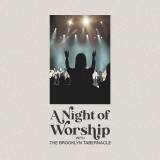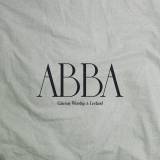How to Remove Audio Feedback through Equalization

Use your EQ controls for knocking down those feedback frequencies.
Not all feedback is eliminated in the same way. Have you ever had people share a microphone and the ringing of feedback only happens with one person? Have you ever created feedback by altering the EQ of a channel? Let’s find out why.
What is feedback?
Audio feedback is the sound created when a sound loops between an audio input and an audio output. A simple example is a microphone and a monitor. The monitor is broadcasting sound the microphone then picks up. The monitor then is amplifying that sound and broadcasting it back out where the microphone picks it up again. Eventually, when the volume going into the microphone is the same as the volume coming out of the monitor, feedback begins.The first frequency that feeds back is the one requiring the least amount of energy to excite resonance. Resonance is a vibration of large amplitude caused by a relatively small stimulus of the same or nearly the same period as the natural vibration period of the system. Stick with me, it gets easier.
What are the common reasons for audio feedback?
- Microphone located too close to a monitor.
- Gain structure set too high so as frequencies primed for feedback.
What can be done to stop audio feedback in these cases?
- Move the microphone.
- Move the monitor.
- Use a microphone with a directional polar pattern such as a cardioid.
- Turn down the monitor volume.
- Turn down microphone channel’s gain.
- Watch for reflective surfaces that bounce the monitor sound to a microphone not directly in line with the monitor. Then, make changes using one of the above.
- Simple but common…turn off microphones when not in use. A stage arrangement can change for an event and create the right conditions for an open mic to cause feedback.
- EQ the microphone channel signal, lowering the frequencies which are causing the feedback, which leads to…
How does the equalization-for-feedback process work?
In the first part of the article, I mentioned the frequency that
required the least amount of energy to excite resonance is the feedback
frequency. Let’s lasso that one to the ground!
Frequencies by their resulting sound:
- Hoots and howls: Likely in the 250 to 500 Hz range.
- Singing: The range is in-line with 1kHz.
- Whistles and screeches: Most likely above 2 kHz.
Determine the likely frequency range and then apply a cut to that
range by 3dB. Using a digital mixer, tighten up the frequency range of
the applied cut so only a small range of frequencies is cut.
If you are constantly dealing with feedback problems, then check out
my guide. The guide covers all aspects of audio production including the
stage and booth work necessary for pro-actively preventing feedback:
ALSO SEE: SOUND EQUALIZATION
What about creating feedback when EQ’ing a channel?
It’s that very EQ process where we can cause feedback ourselves. For
example, one time I had choir mic’s all set and EQ’ed to my liking.
During a specific song, I decided to try boosting the mid-range EQ a bit
more (that 1kHz range). That’s when the feedback started. I quickly
cut that mid-range frequency back before anyone (except my sound guy,
Jeff) noticed.
The keys to feedback control
Eliminate the conditions in which it can appear. Teach singers to hold the mic right up to their lips…and never drop down next to a monitor, establish proper gain structure, and turn off unused mic’s.When it does appear, know that you have an immediate alternative to turning down volumes, you might just be able to EQ it out.
Question(s): What have you done to control feedback in your environment?
How to Remove Audio Feedback through Equalization
 Reviewed by Admin
on
5:30:00 PM
Rating:
Reviewed by Admin
on
5:30:00 PM
Rating:
 Reviewed by Admin
on
5:30:00 PM
Rating:
Reviewed by Admin
on
5:30:00 PM
Rating:
















Post a Comment